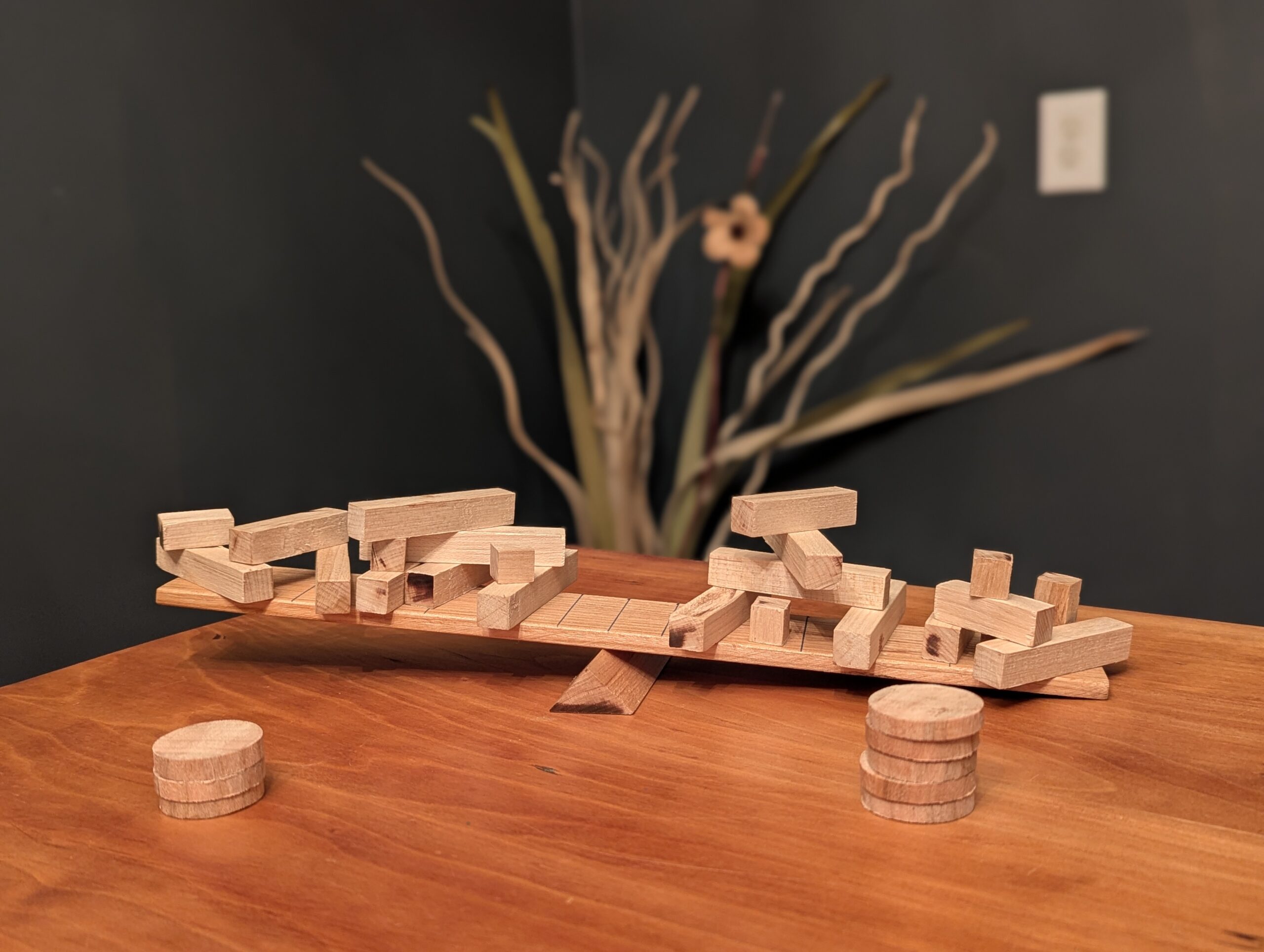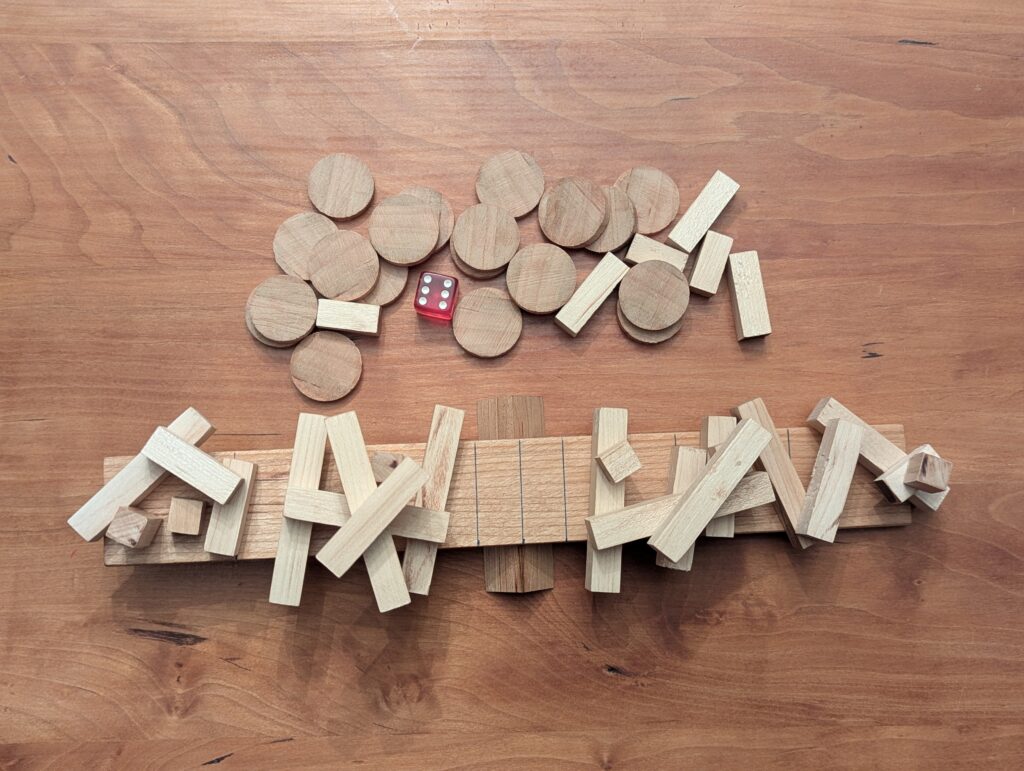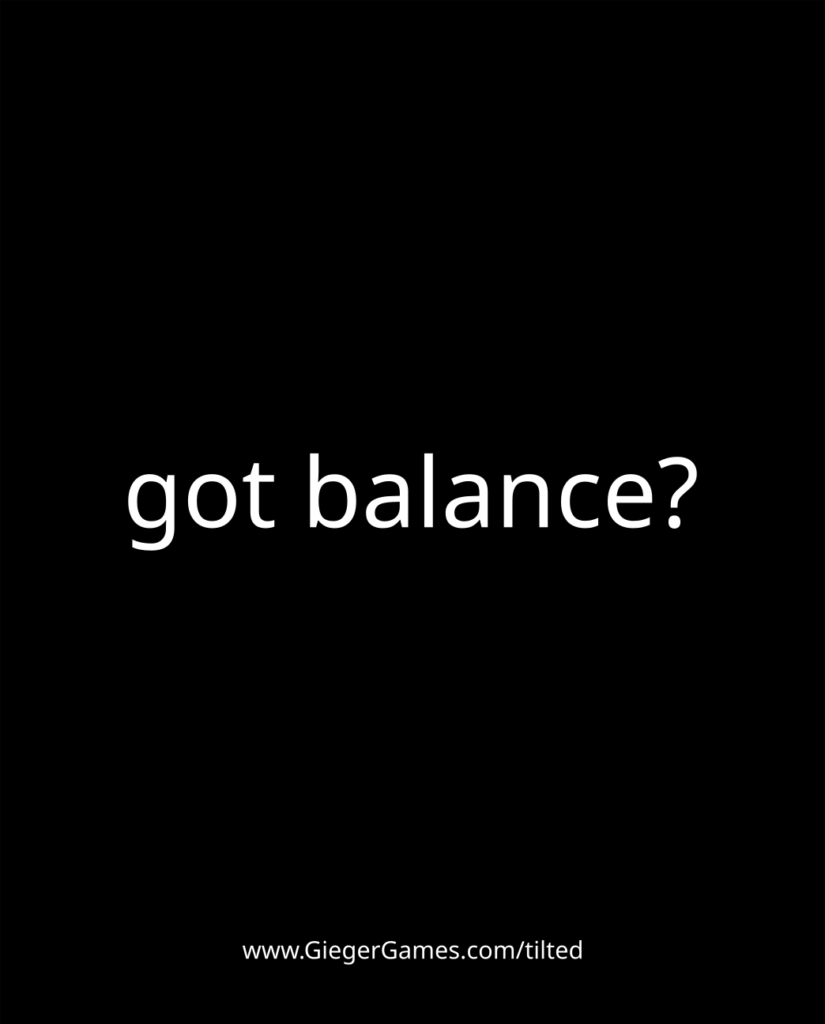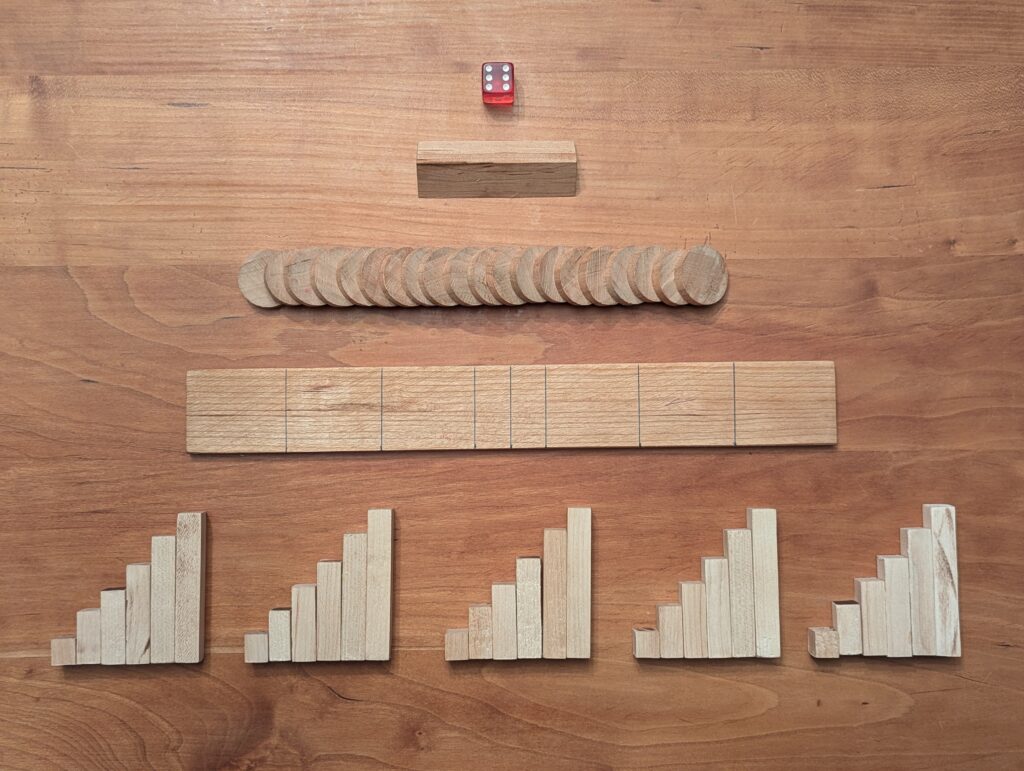
The Original
GiegerGames
Board Game




The Original ‘Tilted’ Board Game and Deluxe Storage Box: A Tabletop Game That Tests Player’s Dexterity & Balance
$60.00
Buy nowFree Shipping!
ℹ️ About
Tilted is a game of balance and strategy for 1 to 4 players. Players take turns earning coins by ‘tilting’ the balance beam with wooden blocks. Place a block near the fulcrum and earn more coins, but fail to ‘tilt’ the balance beam and earn none! Spend coins to buy yourself more blocks. Last player to be able to play a block on their turn wins!
🧩 Components
- x1 – Rule Sheet
- x1 – D6 Die
- x1 – Fulcrum
- x1 – Balance Beam
- x6 – Set of 6 blocks varying in length from 1 to 6 units
- x20 – Wooden Coins

🌟 Object
Be the last player remaining after all other players have been been eliminated.
🏗️ Setup
- Each player takes two coins and a set of 6 blocks (one block of each length).
- Determine first player by a dice roll. Player with the highest roll becomes Player 1.
- Player 1 centers the beam on the fulcrum. One end of the beam should still rest on the table.
🎲 How to Play
Step 1: ⚖️ Place Block
Player 1 places a single block of any size (in any orientation) on the balance beam – attempting to tilt it in the opposite direction.
Step 2: 🪙 Award Coins
After placing a block, player 1 is awarded coins:
If the balance beam is not tilted (or if any blocks fall off the balance beam)0 coins are awarded.
If the balance beam is tilted (and all blocks remain on the balance beam)1 coin is awarded if the block comes to rest in the outermost section of the balance beam.2 coins are awarded if the block comes to rest in the second closest section to the fulcrum.3 coins are awarded if the block comes to rest in the section of the beam nearest to the fulcrum section.
(Also see coin award clarifications below).
Step 3: 🛒 Buy Blocks
Player 1 rolls the die and may pay exactly three coins to buy a block from the supply of equal size to the die number (one being the smallest and six being the largest). If no blocks of the required size remain in the supply, the player may buy the next larger (or smaller) size block at the same cost.
If the player ends step 3 with no blocks, the player is eliminated from the game.
Step 4: 🔁 Repeat
In clockwise order, the next player begins at Step 1.
Block Placement Clarifications
- Players must always place blocks on the higher side of the balance beam.
- Blocks may be placed on top of other blocks.
- Players may not be touching the block when it makes contact with the balance beam. In other words, players must ‘drop’ the block (from any height) onto the balance beam.
- Blocks may move during the course of play. This is normal.
- If any block moves on or across the fulcrum line, blocks may no longer be placed on top of that block (or on top of any other block that relies on that block).
- If there are no blocks in the supply, players may not buy blocks, however, coins may still be ‘awarded’ if the supply has no coins.
Coin Award Clarifications
- Blocks touching lines are awarded the lower coin value.
- Blocks that fall off the board or touch the table are awarded 0 coins and are returned to the supply along with a one coin penalty per block returned. If a player does not have enough coins to pay the full penalty, the player must pay all their coins.
- Blocks leaning against, or on top of (and touching) other blocks are rewarded the lowest coin value of any of the supporting blocks beneath it.
- Blocks are allowed to extend off the beam or over other sections – they will still be awarded the higher coin value so long as the block itself is not touching the lower value section or being supported by a block that is touching that lower value section.
- Section lines do NOT continue in an imaginary line from the edge of the beam. The lines only wrap around the edge of the beam to help players determine the position of the line in case the top of the line is completely covered by blocks. For example, a block may be awarded 3 coins even though it extends past the side of the 2 coin section.
📑 Advanced Rules
Once players have experience with the basic rules, Step 3 from the basic rules can be replaced for more strategic play:
Step 3: 🫰 Auction Block
- All players complete Steps 1 and 2 before continuing.
- The last player rolls the die and places a block of equal size to the die roll up for bid.
- The last player begins the bid.
- In clockwise order, players may raise the bid (by any amount) until a bid winner is determined
- Once a player declines to bid, they cannot bid again in that auction.
- The player who wins the bid, buys the block, gives the die to the player on their right, and starts the next round of play (they become Player 1 in Step 1).
- When any blocks would normally be returned to the supply, the blocks are auctioned one at a time (after the offending player has paid the 1 coin per block penalty).
- The offending player chooses the order in which the blocks are auctioned, and bid starts with the following player.
- After all blocks have been auctioned, play continues as if the auctions had not happened.
- Players are eliminated at the start of their turn if they do not have a block to place.
👤 Solo Rules
Solo game-play is identical to the basic rules with the following changes:
- The game ends when the player does not have a block to play on his/her turn.
- Score is calculated by counting the number of coins remaining after all the player’s blocks have been placed.
- The player is not required to purchase blocks in Step 3, however it may be advantageous in certain circumstances.
❓Have Feedback or Questions?
Email us at: tilted@giegergames.com